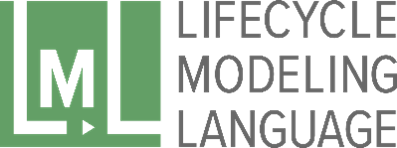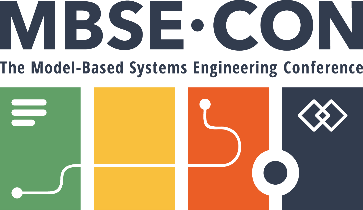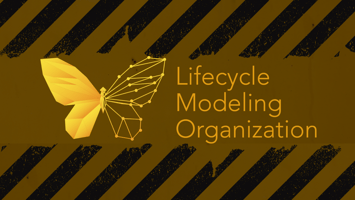Establishing Lifecycle Modeling Organization's Brand
The Lifecycle Modeling Language (LML) was created in 2012 and overseen by the lifecycle modeling steering committee. With the need to bring back data relationships into model-based systems engineering (MBSE), LML has significantly increased in growth. We have successfully launched two conferences focused on MBSE and an e-magazine. As a result, there became a need to create an organization for LML that runs the business functions. With that need, the Lifecycle Modeling Organization was born.
The Lifecycle Modeling Organization (LMO) as its own organization needed branding separate from LML. We chose a butterfly half completed and half-built out of system nodes and links. The logo symbolizes 1) the digital twin being two parts: the data in the system and the physical result, and 2) the lifecycle of a system or process.
The lifecycle of a butterfly is one of nature’s most fascinating cases of a lifecycle. Butterflies go through a complex process of metamorphosis where they break down on a cellular level to create something new; a fitting analogy for lifecycle modeling. Lifecycle modeling allows you to successfully develop complex systems or processes using natural words and ontologies from inception to disposal to reuse.
.png?width=1729&name=Narrow_Orange%20(1).png)
The Lifecycle Modeling Organization’s (LMO) goal is to build a future that can handle the complexities of our rapidly changing world by changing the way people understand and handle data through a simple ontology. Growth is crucial to the lifecycle and the ever-changing Systems Engineering (SE) industry, and we’re excited to share what’s new with LMO.
We’ve also been working on our new website to raise awareness of lifecycle modeling, increase engagement, and match our new branding. Some of the greatest changes have been updates to our membership packages, our new brochure on our Resources page, videos from the last MBSE-CON to watch free of charge, and so much more. Visit our website to see all our exciting changes and to learn more about LMO.
About LMO: LMO develops and maintains an open-source modeling language that is structured and behavioral. LMO trains and educates members on how to effectively use the lifecycle modeling methods, including LML and the Lifecycle Modeling Framework (LMF) (coming soon) to develop safer, more cost-effective systems and products. Learn more and become a member at lifecyclemodeling.org.
Lifecycle Modeling Organizations’ Logos. Please see logo permissions before using any of these logos.

Lifecycle Modeling Language

MBSE-CON

Lifecycle Modeling Organization
Logo Permissions
- Use a permitted LMO logo to link to LMO’s website.
- Use a permitted Lifecycle Modeling Language logo to inform others that you or your organization is using Lifecycle Modeling Language in your projects.
- Use the MBSE-CON, LMO, or LML logo in a blog post or news article about MBSE-CON, LMO, or LML.
- Use the permitted LMO logos less prominently than your own company or product name or logo.
- Do not use the Lifecycle Modeling Organization name or any Lifecycle Modeling Organization logo in a way that suggests you are Lifecycle Modeling Organization your offering or project is by Lifecycle Modeling Organization, or that Lifecycle Modeling Organization is endorsing you or your offering or project.
- Do not use any Lifecycle Modeling Organization logo as the icon or logo for your business/organization, offering, project, domain name, social media account, or website.
- Do not modify the permitted Lifecycle Modeling Organization logos, including changing the color, and dimensions, or combining it with other words or design elements.
- Do not use any other Lifecycle Modeling Organization trademarks, logos, designs, or artwork without Lifecycle Modeling Organization’s prior written permission.
In short, the Lifecycle Modeling Organization logos represent only GitHub and should not be used to represent you or your projects, products, or company.



.png?height=200&name=Untitled%20design%20(48).png)
.png?height=200&name=bpmn%20%26%20lml%20(1).png)